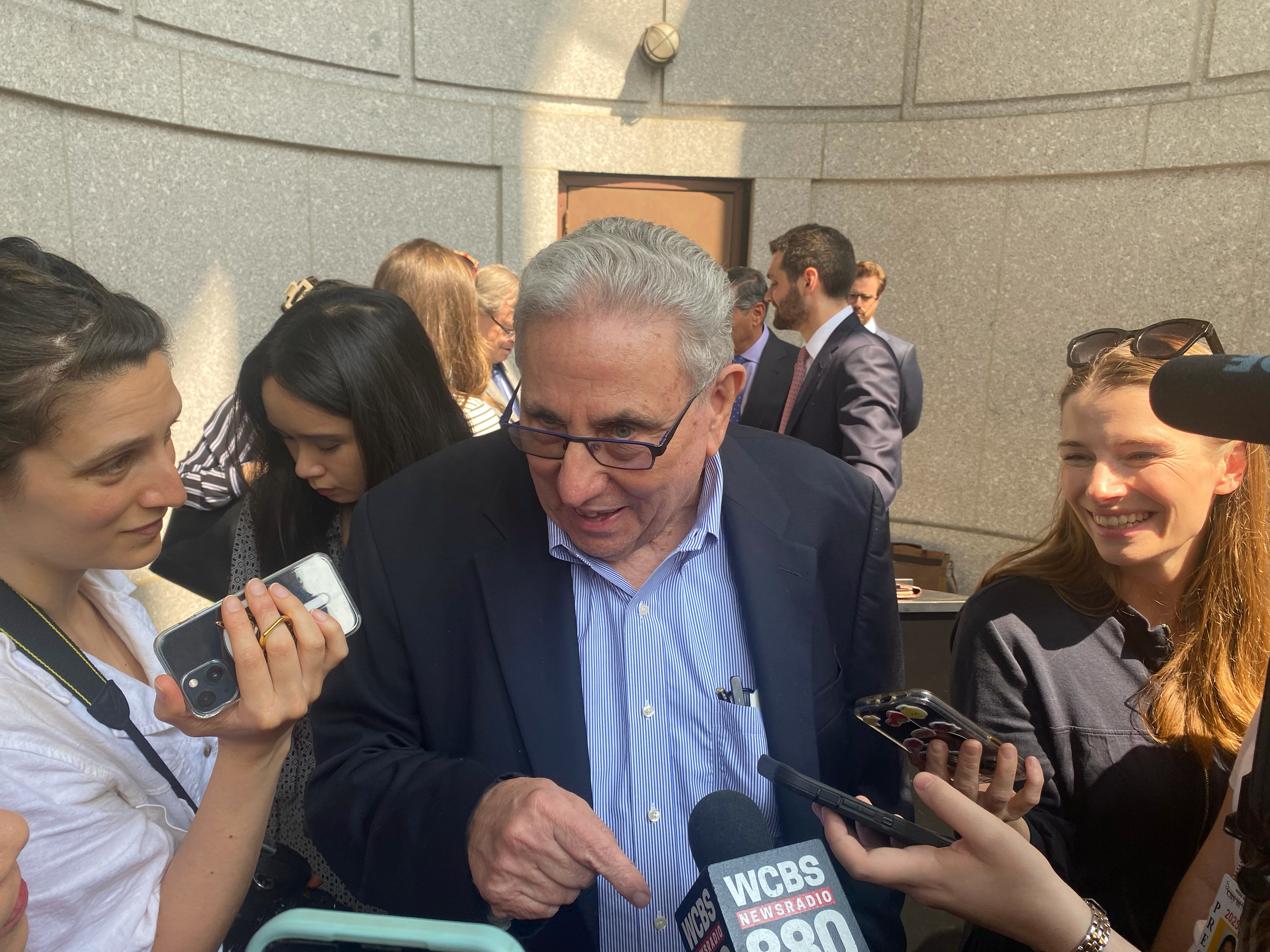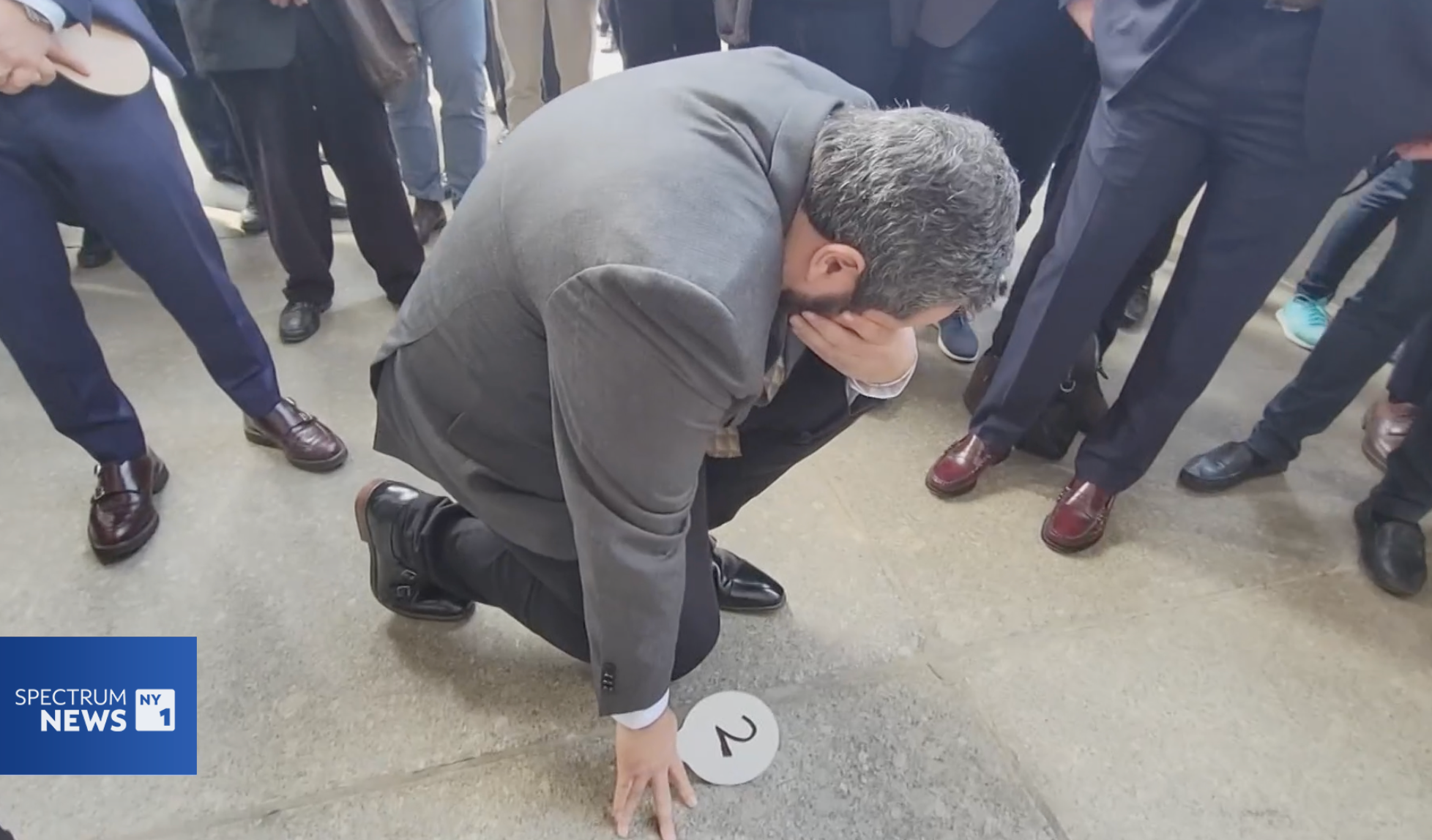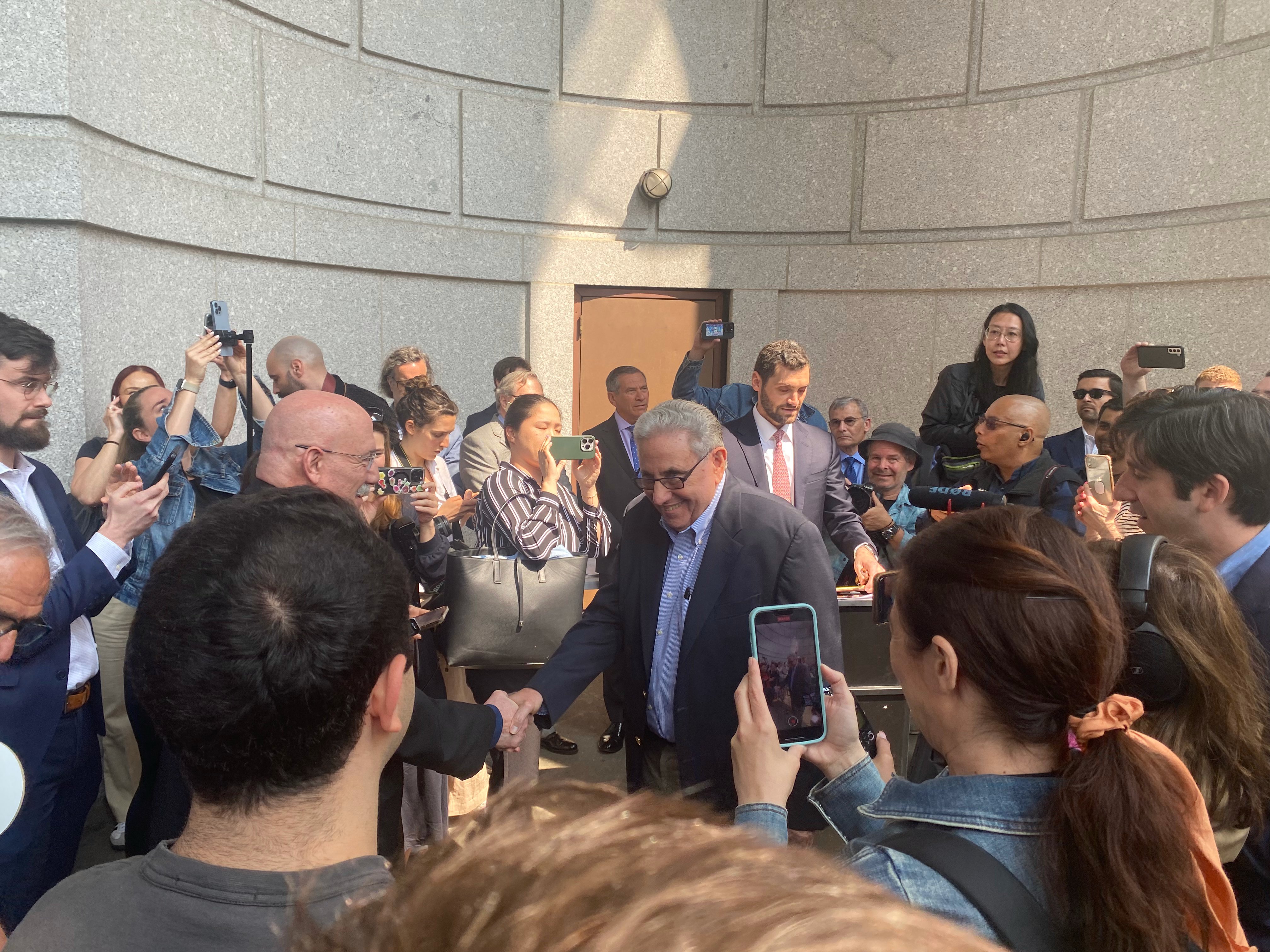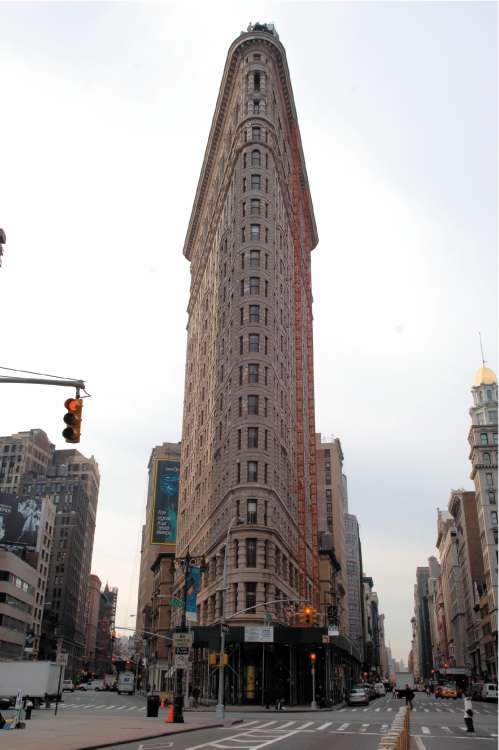The Flatiron Building’s $161m sale ends a bitter legal battle. Now its owners must decide what comes next
After a long-running battle between its owners, and a farcical first public auction, New York’s famous Flatiron Building sold at auction for $161m. Its proprietor tells Bevan Hurley he wants to restore the world-famous landmark to its previous glory


For nearly four years, the limestone and terracotta facade of New York’s world-famous Flatiron Building has been encased in an unsightly web of black net and scaffolding.
An $80m renovation project that began in 2019 to transform the 121-year-old landmark into a state-of-the-art office space was only supposed to take about 12 months.
However, a falling out between the building’s five owners over the cost of the refit, its tenants and future use saw the restoration project grind to a halt.
After a lengthy court battle, a New York Supreme Court judge ordered the building be sold at public auction in January.
Then a first auction in March descended into farce when little-known venture capital fund manager Jacob Garlick bid $190m for the building, before failing to pay the 10 per cent downpayment.
It went to a second public auction at the county courthouse in lower Manhattan on Tuesday 23 May, where its longtime part-owner Jeffrey Gural successfully bid $161m for the building.
Afterwards, Mr Gural, the chairman of GFP Real Estate, told The Independent he hoped the scaffolding would be taken down within a few months, and renovations completed by the end of 2024.

He said the group of owners he represented had been forced to rethink their original plan of converting the building into offices, given skyrocketing interest rates and the shifting economics of Manhattan real estate.
They were now looking at either a 50-50 split of residential and commercial, or converting the entire building into apartments.
Whatever they decide, Mr Gural promised to preserve the cherished landmark.
“I’m a New Yorker, I own 40 other buildings. I’m not going to screw up my legacy. It’s just a question of figuring out what to do,” the 80-year-old real estate mogul told The Independent.
Fracas at the Flatiron
In 2021, a long-simmering dispute between the Flatiron Building’s owners over the cost of renovations, tenants and the building’s future use wound up in court.
Four of the five owners – GFP Real Estate, the Sorgente Group, Newmark Group, and ABS Partners – sided with each other to file a lawsuit against the fifth, Nathan Silverstein in 2021.
Mr Gural, the chief executive of GFP Real Estate, told The Independentthat the four stakeholders who collectively owned 75 per cent of the building were broadly in agreement with how to move forward with the refit project.
He claimed that Mr Silverstein had opposed their proposals, and wanted to divide the building into five separate properties, which he said would be unworkable due to its status as a historic landmark.
In an affidavit, Mr Gural said the impasse was costing the owners hundreds of thousands of dollars each month.
Mr Silverstein, who inherited 25 per cent of the building from his father, countered in a separate lawsuit that the management company was locking the building into a “exceptionally low” rental contract with workspace leasing firm Knotel.
The New York Supreme Court dismissed Mr Silverstein’s complaint, and in January this year ordered the building to be sold at public auction to resolve the dispute.
‘It’s been a lifelong dream’
A first auction was held on the steps of the county courthouse in lower Manhattan in mid-March.
Jacob Garlick, the managing partner of Virginia venture capital firm Abraham Trust, stunned seasoned New York real estate observers when he successfully bid $190m for the world-famous landmark.
Mr Garlick had gone toe-to-toe with Mr Gural during 40 minutes of intense bidding that saw the price increase by nearly $70m.
After the bidding duel, Mr Garlick dramatically sank to his knees and then raised his arms skywards.

“It’s been a lifelong dream of mine since I was 14 years old,” Mr Garlick told NY1 in an interview.
“We’re honoured to be a steward for this building and it will be our life’s mission to preserve its integrity for ever.”
Two days later, the sale fell through when Mr Garlick failed to pay the required 10 per cent deposit.
Mr Garlick did not respond to several requests for comment for this article. The website of his investment firm provides little information about what it does.
Mr Gural was given the option of purchasing the building for the inflated bid of $189.5m, which he declined.
“I was kind of shocked, to tell you the truth,” Mr Gural told reporters after the March auction.
“I never thought that someone would bid so much for the building. It's a beautiful building, but it needs $100 million of upgrades.”
Mr Gural told The Independent he had not heard anything from Mr Garlick since the auction.
His GFP Real Estate was among several Flatiron Building owners who filed a lawsuit against Mr Garlick for the $19m downpayment, plus associated fees and damages. The lawsuit alleged that Mr Garlick simply wanted his “15 minutes of fame”.
“I feel sorry for the guy because I think he really wanted to own the building,” Mr Gural told The Independent this week.
He said he suspected Mr Garlick may have been put up to the bid by Mr Silverstein, but wasn’t really sure.
Mr Silverstein later told real estate site The Real Deal that Mr Garlick was a cousin, but that the pair had only met once and there had been no secret deal. No evidence has been produced to suggest they were working together.
The Independent was unable to reach Mr Silverstein for comment.
‘We’ve always stuck together’
The famed New York City landmark went under the hammer for a second time before a crowd of about 200 onlookers on the steps of the county courthouse in lower Manhattan on Tuesday afternoon.
Auctioneer Matthew Mannion told the crowd that bidders would be required to put down a $100,000 deposit to the court-appointed referee, to prevent a repeat of the previous debacle.
Among the seven bidders were father and son Lajos and Leon Horvath.
The pair had hoped to give the building “back to the community” they told The Independent, by turning it into a mixed retail, office and residential space. Leon Horvath, 20, said the auction appeared to be better organised than the the previous chaotic scenes in March.
The bidding began at $50m, and quickly moved up in increments of $2m. Five parties remained in the bidding until the $100m mark, and by the time it reached $150m, just three were left.
The Horvaths dropped out of the running around the $150m range.

Mr Gural appeared at ease continuing to increase the bid price as rivals dropped out, and the increments fell to $1m and then $500,000. After about 20 minutes of spirited bidding, the gavel finally fell at $161m.
Chatting to media afterwards, Mr Gural explained that as he and his partners already owned a three-quarter stake in the Flatiron, they were only on the hook for a quarter of the sale price.
“We’ve always stuck together and the goal was always to buy (Nathan Silverstein’s) 25 per cent at a reasonable price.”
Mr Gural said the owners group would decide quickly whether to try apply for the paperwork to turn the building into accommodation.
“Everybody talks about the city accelerating converting office buildings into apartments, but it’s just unfortunate that we need special permits so it takes time.”
He said the Flatiron occupied a special place in the city’s cultural and architectural landscape.
“There are three iconic New York buildings, the Empire State, the Chrysler and the Flatiron Building,” he said.
An ‘architectural monstrosity’
Completed in 1902 and designed by Daniel Burnham, the 22-storey skyscraper was built on a triangular wedge between Broadway and 5th Avenue on the southern edge of Madison Square Park.
It was initially used by as a headquarters by its first owners the Fuller Company.
Early detractors dubbed the building Burnham’s Folly. But its striking three-faced facade soon made it a popular landmark and it later earned its name due to its resemblance to the cast-iron clothes irons.
The New York Times wrote in 1933 that the one-time “architectural monstrosity” had quickly become the most photographed structure in the city.
In 1966, it was designated as a landmark by the New York City Landmarks Preservation Commission, one of the first skyscrapers in the city to be protected under city planning codes.

It was added to the National Register of Historic Places in 1979, and designated a National Historic Landmark in 1989.
In the mid-1980s, the revitalised neighbourhood around the building became known as the Flatiron District.
The Fuller Company sold the building at auction in 1925 for $100,000.
The building’s ownership changed hands several times before a consortium led by Nathan Silverstein’s father Max purchased it for $1.05m in 1945.
It now appears on postcards, books and other tourist collectibles, and is said to be one of most recognisable buildings in the world.
The Flatiron has sat empty since 2019, when its last tenant, Macmillan Publishing, vacated its offices on all 21 floors.
The owners then pushed out the ground floor retail shops in order to push forward with an ambitious $80m renovation plan to modernise the historic building.
Prior to the pandemic, the steel-framed building at 175 Broadway was valued at approximately $200m. However Covid-19 saw droves of New Yorkers flee the city, and while many have since returned, Manhattan’s commercial real estate market is still struggling to fill vacancies.
Join our commenting forum
Join thought-provoking conversations, follow other Independent readers and see their replies
Comments


Bookmark popover
Removed from bookmarks